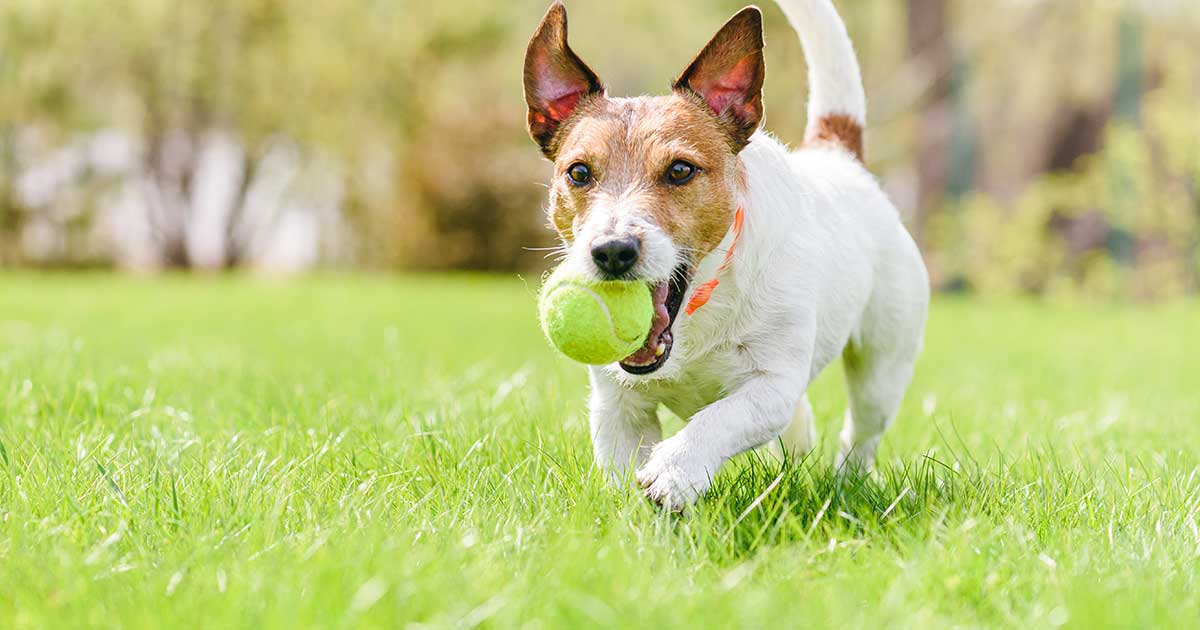True Cellular Formulas Team - March 11, 2024
The Hidden Danger in Your Pet's Favorite Toy
Why Tennis Balls Might Harm Your Furry Friend

Tennis balls have long been a staple in households with pets, serving as a go-to toy for countless hours of fetch and play. However, beneath their seemingly harmless exterior lies a potential threat to our furry companions' health. In this article, we'll delve into the hidden dangers lurking within tennis balls and explore why they may not be the safest option for your beloved pet.
The Toxic Truth Behind Tennis Balls
At first glance, tennis balls appear innocuous, but they are often manufactured using a variety of chemicals and materials that can be harmful to pets. One of the primary concerns is the presence of phthalates, chemicals used to enhance the flexibility and durability of plastics. These phthalates have been linked to a range of health issues in both animals and humans, including hormonal disruptions and reproductive problems.[1]
Furthermore, tennis balls may contain other toxic substances, such as BPA (bisphenol A), commonly found in plastics and associated with adverse health effects, including cancer.[2] When pets chew on tennis balls, they can release these chemicals into their mouths, putting them at risk of ingestion. Over time, repeated exposure to these toxins can accumulate and contribute to long-term health problems for our furry friends.
The Lead Lurking Within
Another alarming aspect of tennis balls is the presence of lead in many of them. Lead is highly toxic and can cause severe health issues, even in small amounts. Pets, especially puppies who are more prone to chewing on toys, are at risk of ingesting lead when playing with tennis balls. This ingestion can lead to neurological damage and other serious health problems, posing a significant threat to their well-being.[3]
Additionally, the abrasive nature of tennis balls can cause wear and tear, leading to the release of microplastics and other particles that pets may inhale or ingest.[4] These microplastics can further compromise their health and contribute to digestive issues.[5] Given these risks, it's crucial for pet owners to reconsider the toys they provide for their furry friends and seek safer alternatives to ensure their health and safety.
Protecting Your Pet: Finding Safer Alternatives
Given the potential dangers associated with tennis balls, it's imperative for pet owners to explore safer alternatives for their furry companions. Fortunately, there are numerous options available that prioritize pet safety without compromising on enjoyment.
Rubber chew toys are a popular choice, providing durability and resilience while minimizing the risk of toxic exposure. Look for toys labeled as phthalate-free and lead-free, ensuring that they meet stringent safety standards. Additionally, plush toys made from natural materials offer a softer alternative for gentle play, reducing the risk of abrasion and ingestion of harmful particles.
When selecting toys for your pet, consider their individual preferences and play habits.
Interactive toys, puzzle feeders, and treat-dispensing toys can provide mental stimulation and enrichment, promoting overall well-being while minimizing exposure to potential toxins. By investing in high-quality, pet-safe toys, you can ensure that your furry friend enjoys playtime to the fullest while staying safe and healthy.
Raising Awareness: Spreading the Word
Now that you're equipped with knowledge about the hidden dangers of tennis balls, consider the broader impact you can make by raising awareness within your community. Many pet owners may be unaware of the risks associated with these common toys, making education and advocacy essential tools in safeguarding pet health.
Share this information with fellow pet owners through social media, community forums, or local pet groups. Start conversations about pet toy safety and encourage others to reconsider their choices when selecting toys for their furry companions. By amplifying awareness and sharing resources, you can empower pet owners to make informed decisions that prioritize their pets' well-being.
Consider collaborating with local veterinarians, pet stores, or animal shelters to host educational events or workshops focused on pet safety. Provide practical tips for identifying safe toys and offer guidance on creating enriching play experiences for pets without compromising their health. Together, we can work towards creating a safer environment for all pets to thrive and enjoy a lifetime of happiness and play.
Summary
While tennis balls may seem like a harmless toy for pets, the reality is far more complex. With the presence of toxic chemicals and the risk of ingestion, it's crucial to prioritize pet safety by exploring alternative toys made from pet-safe materials. By spreading awareness and advocating for safer practices, we can create a safer environment for our furry companions to thrive in. Let's ensure that every moment of playtime is not only enjoyable but also safe and enriching for our beloved pets.
- Phthalates in Children’s Products and Consumer And ..., apps.ecology.wa.gov/publications/documents/1404017.pdf. Accessed 27 Feb. 2024.
- Gao, Hui et al. “Bisphenol A and hormone-associated cancers: current progress and perspectives.” Medicine vol. 94,1 (2015): e211. doi:10.1097/MD.0000000000000211
- Sanders, Talia et al. “Neurotoxic effects and biomarkers of lead exposure: a review.” Reviews on environmental health vol. 24,1 (2009): 15-45. doi:10.1515/reveh.2009.24.1.15
- US Department of Commerce, National Oceanic and Atmospheric Administration. “What Are Microplastics?” NOAA’s National Ocean Service, 13 Apr. 2016, oceanservice.noaa.gov/facts/microplastics.html. Accessed 27 Feb. 2024.
- Tamargo, Alba et al. “PET microplastics affect human gut microbiota communities during simulated gastrointestinal digestion, first evidence of plausible polymer biodegradation during human digestion.” Scientific reports vol. 12,1 528. 11 Jan. 2022, doi:10.1038/s41598-021-04489-w



